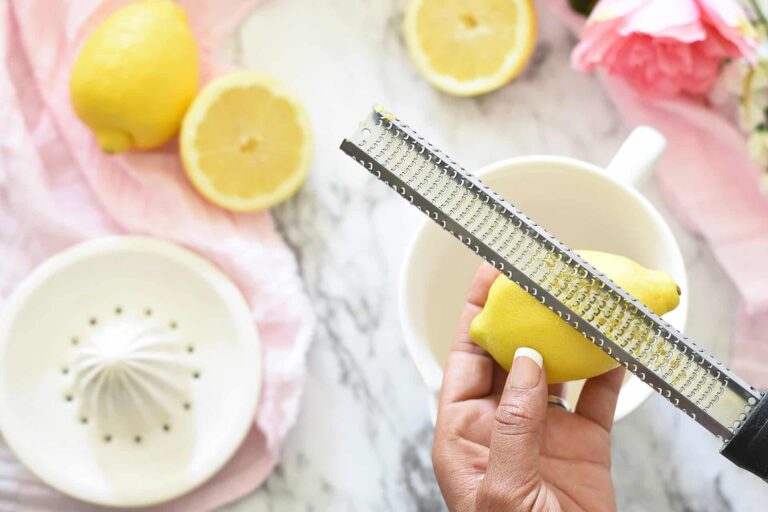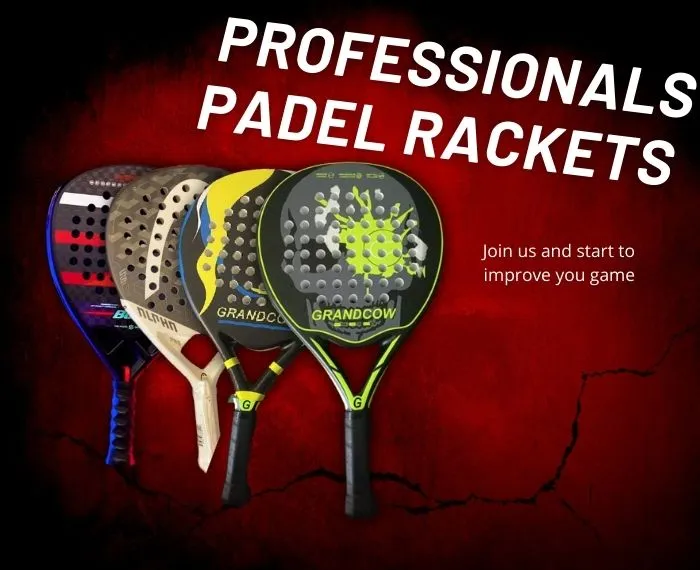Rules for Paddle Tennis | Guidelines To Serve Well in Court

Are you prepared to advance your Padel skills? Whether you’re a novice or an experienced player, learning the game’s Rules for paddle tennis and strategies is crucial for success. We’ll go over everything you need to know to master the game of Padel in this extensive tutorial. We’ll walk you through all the fundamental principles and strategies you need to know, from the serve to the volley. Prepare to raise your game and master Padel!
1. Padel Court
The court is divided into two half by a net and is 20 meters long by 10 meters wide. The court surface can be built of any material as long as it provides a consistent bounce for the ball, unlike the walls around the court, which are made of numerous materials.
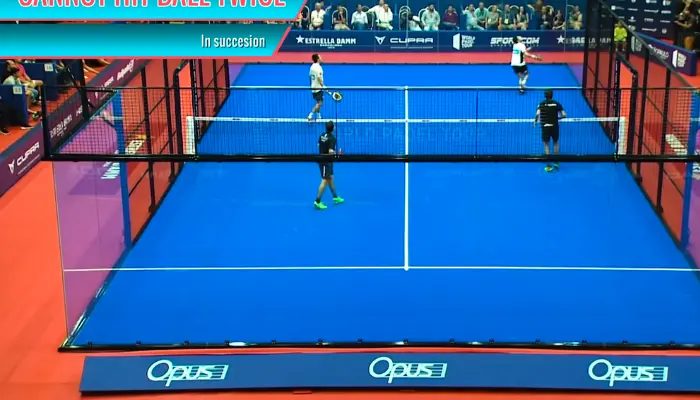
An essential component of the game is the net, which is 10 meters long, 88 cm tall in the middle, and has a tolerance of 5 millimeters. The court’s entrances can be found on one or both sides, and they need to be symmetrical with one or two openings.
2. Padel Racket
When you step onto the padel court, one of the most important pieces of equipment you’ll need is a good padel racket. But with so many different options out there, it can be tough to know where to start when it comes to choosing the right one.
First and foremost, you’ll want to think about the weight of the racket. A lighter racket will give you more control, while a heavier one will pack more power. Depending on your playing style, one may be more beneficial than the other.
You’ll also want to consider the shape of the racket. Round rackets will give you more control, while diamond-shaped ones will give you more power. Which one you choose will depend on your personal preferences and playing style.
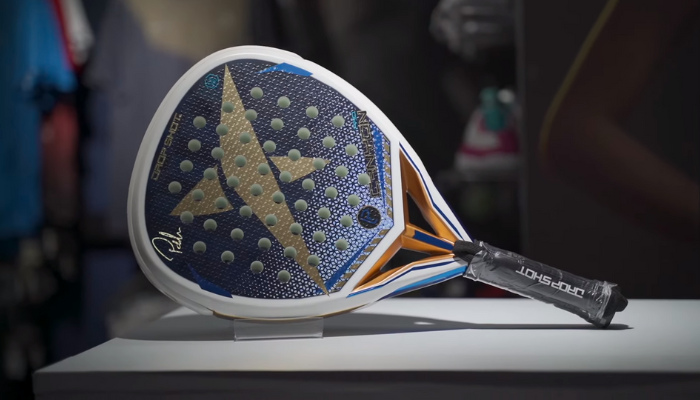
Another key factor to keep in mind is the grip size. Having a comfortable grip is crucial for preventing injuries and improving your overall performance. And of course, you’ll want to think about the materials used to make the racket, as this will impact its durability, performance, and price.
Ultimately, the key to finding the best padel rackets is to try out different options and see what feels best for you. Consider your skill level, playing style, and budget, and don’t be afraid to ask for recommendations from more experienced players or professionals. With a little bit of research and experimentation, you’ll be well on your way to finding a padel racket that will help you dominate on the court.
3. Padel Racket Balls
Selecting the right padel ball is crucial for optimal performance on the court. Consider factors
such as durability, consistency, and visibility when choosing the right ball for you. Find the perfect ball to elevate your game and enjoy longer gameplay.
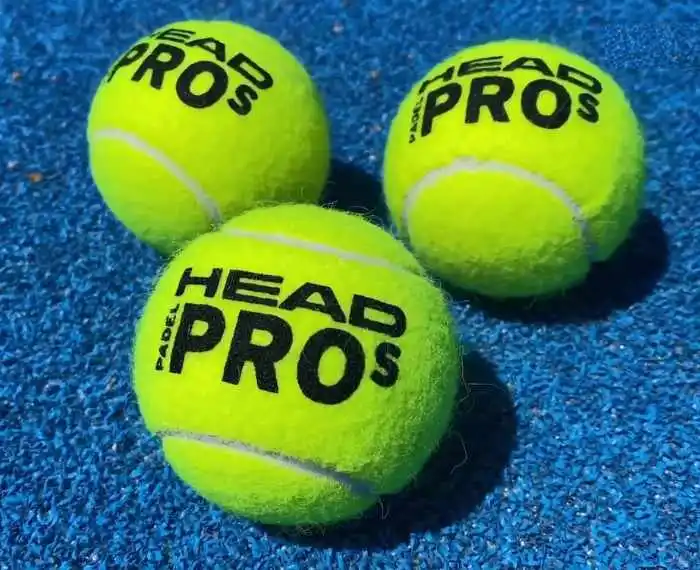
Improve your accuracy and control with a ball that offers consistent bounce and grip. Don’t let
visibility be an issue – choose a best padel ball that is easy to track and adjust your shots accordingly.
4. Scoring System
The first point would be worth 15, the second 30, and the third 40. In the case of a tie in a game to 40. Except when both pairs have earned three points in a row, in which case the situation is referred to as “deuce.” If the score is deuce, the game must be won by scoring two points in a row.
A set will be formed by the first pair to win 6 games, always with a minimum advantage of 2 clear games. In the event of a tie after five games, the players will play two additional games to win by a margin of two games.
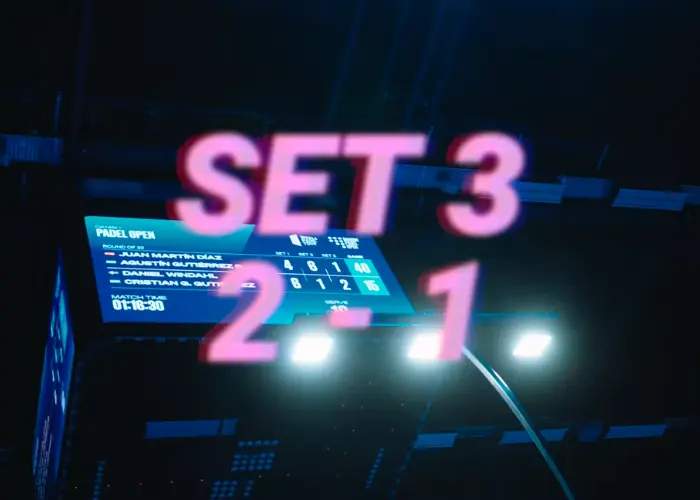
However, a “tie-break” independent point system will be used if there is a tie after six games. It’s a best-of-three-sets match. Three sets, each consisting of six games, make up a match. It is decided by the winners of two out of the three sets. It is essential to accurately calculate the points and determine whether a tie will result in a golden point.
Any of the following events awards the opposition a point:
- The opponent strikes the ball against one of your walls or outside the play area, such as outside the cage.
- On the side of the opposition, the ball bounces twice off the ground.
- The opponent strikes the ball into their own grid.
- The opposing team scores with a hit to the net.
5. Tie Break
When there is a tie, the points are called one by one. Whoever earns seven points first wins. The game will go on until a pair wins by a margin of at least two points. In a “tie-break” set, 7-6 will prevail.
The player that begins serving first in the tiebreak is determined by the order of serves during the set. During the first point of the tiebreak, this player will only serve once from the right side of the court.
The next two points will be served by the opposing team, with the first one coming from the left side of the court. Following that, the players will serve two consecutive points, usually from the left side of the court.
6. Serving in Padel
The player will stand on the right side of the court, both feet behind the service line. He will toss the ball into the box of the opposite team after it bounces. Usually, to properly serve, you must strike the ball below the waist; otherwise, you will be cheating on the serve.
The opposite service box, which is situated directly across from where you are serving, must receive the service. The ball shouldn’t go through the net and rebound inside the service box.
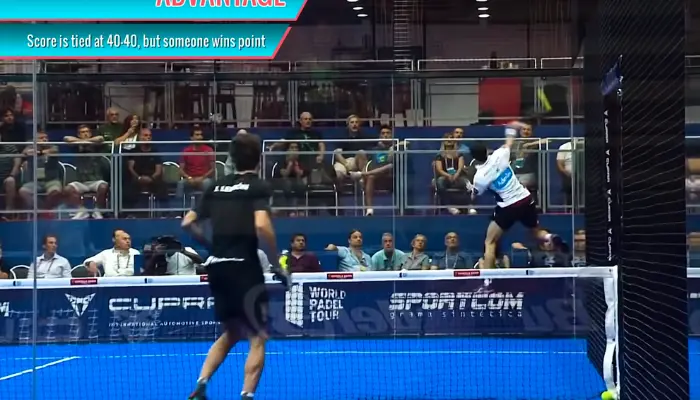
The individual who receives the serve again has the option of striking the ball either before or after it strikes the glass wall. Both play halves begin when the server makes a correct diagonal bounce within the service box and the returning player hits the ball.
You receive one additional serve after a faulty one. No matter how many times you’ve attempted to get the ball to land in the proper service box if it is a foul serve, you earn another chance.
Guidelines of Serving in Padel
There are the following guidelines that apply to the serve:
- Both feet must always be behind the service line, and they must stay there until the ball has been served.
- The serve must cross the net diagonally and land inside the lines indicating the receiver’s box. The ball is in play after the return of serve until one team scores a point. The next service is then delivered diagonally to the right after being received from the left, and so on.
- Before striking the ball, the server must give it one bounce, and the strike must be made at or below waist level.
- When striking the serve, the server must retain at least one foot on the ground.
- Crossing the centre service line to make contact with the ball is permitted.
- The serve must land in the opponent’s service box.
- The opposing player must play the ball if it bounces in the service box and hits the side or back wall because that constitutes a proper serve.
- It is a let and needs to be replayed if the ball contacts the net, rebounds inside the service area, and hits the side or back wall.
- A fault occurs if the ball first strikes the net, then travels through the service box and strikes the wire netting.
- Small foot motions that have no impact on the chosen service posture are acceptable.
- Until the player receiving is prepared, the server won’t start serving.
- The point goes to the server if the ball touches or strikes any of the receivers before it bounces.
7. Padel Court Positioning
Padel court positioning is a crucial aspect of playing the game that requires careful planning and execution. Essentially, it refers to where players stand and move on the court in order to maximize their performance and strategy during a match.
Understanding the layout of the Padel court is key, as it’s rectangular in shape, divided into two halves by a net, and has service boxes on each side.
There are a few key areas of the court that players need to focus on in order to succeed. The net area is one such zone that players should be familiar with, as it’s crucial for both offense and defense. Players can use the net area to hit powerful volleys and smashes, but also need to be prepared to defend against shots hit by their opponents in this area.
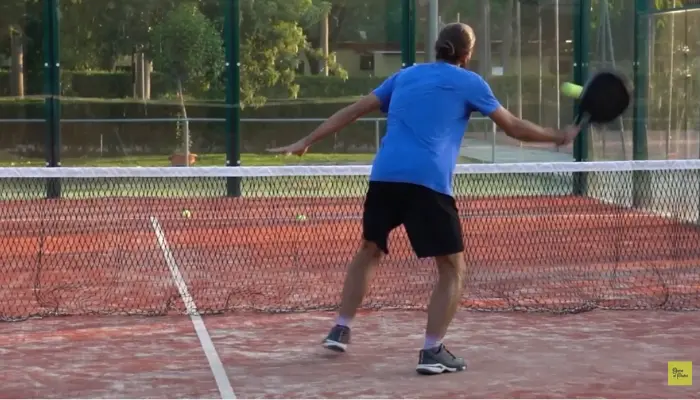
The backcourt is another important area of the court where players will spend a lot of time hitting shots and defending against their opponents. Finally, players need to be aware of the side walls and back wall, which can be used to set up shots or as a defensive tactic to keep the ball in play.
To improve their overall performance, players need to be familiar with these key areas of the court and how to position themselves in each one. It’s important to communicate with your partner and coordinate your movements to ensure optimal positioning and maximize your chances of winning.
With practice and dedication, mastering Padel court positioning can take your game to the next level. So get out there and start practicing.
Forehand Padel shots
It is a versatile shot that you can use to hit winners or simply keep the ball in play. It’s executed by hitting the ball with your dominant hand on the same side of your body as the ball.
Serve Padel shots
It is a crucial shot in Padel. It’s an underhand shot that needs to land in the opposite service box and must be hit from behind the baseline.
Lob Padel shots
The Lob is a defensive shot that can be used to get the ball over an opponent’s head who’s positioned near the net. It’s hit high and deep, forcing your opponent to retreat.
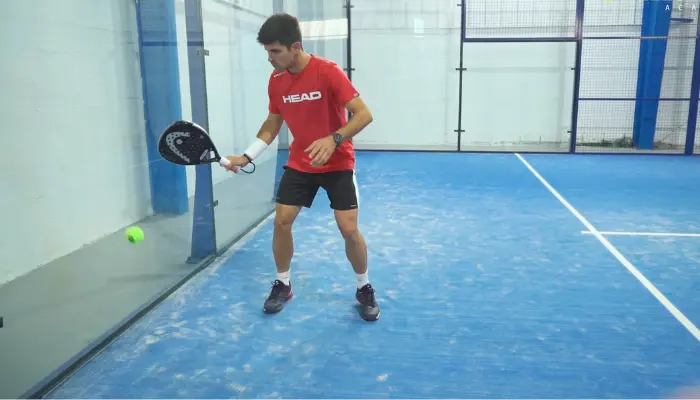
Volley Padel Shots
The Volley is a quick and efficient shot that’s executed by hitting the ball before it bounces. It’s an excellent shot to use to put away easy points.
Back Glass Padel Shots
The Back Glass shot is a defensive shot that involves hitting the ball off the back wall to keep it in play. It can be used to buy time and set up a more aggressive shot.
La Bandeja Padel Shots
La Bandeja is a type of Padel shot that involves hitting the ball high and deep, often in a defensive situation. It’s useful for keeping the ball in play and setting up more aggressive shots.
Vibora Padel Shots
The Vibora is an advanced Padel shot that requires precision and timing. It involves hitting the ball with a lot of spin and power, making it difficult for opponents to return.
Smash Padel Shots
The Smash is a powerful and aggressive shot that’s executed by hitting the ball hard and downward, forcing your opponent to scramble to return it.
Shot in 3 Padel Strategy
The Shot in 3 is a strategy that involves hitting the ball in such a way that your opponents need to return it in three shots or less. It’s an effective way to put pressure on your opponents and set up easy points.
La Chiquita Padel Shot
La Chiquita is a Padel shot that’s hit softly with a lot of spin, making it difficult for opponents to return. It’s a great shot to use to surprise your opponent and set up more aggressive shots.
Padel Doubles
Padel Doubles is a really fun and exciting version of padel where you get to team up with another player and take on your opponents together. The court is smaller than a tennis court and has walls around it, which makes for a fast-paced and intense game.
In Padel Doubles, you and your partner have to work together to control the court, anticipate your opponents’ moves, and execute your shots effectively. Communication is key in this game, and you’ll need to use clear and concise language to make sure you and your partner are always on the same page.
Playing the net in Padel Doubles can be challenging, but it’s also a great way to take control of the game. By learning the right footwork and positioning, you can make some awesome plays and really dominate your opponents.
Anticipating your opponents’ next moves is also really important in Padel Doubles. By paying close attention to their body language, racket position, and shot angles, you can stay one step ahead and put yourself in the best position to make a play.
With these padel game rules, it will be easier to get a serious game going. And when everyone knows the Rules for paddle tennis, the game is much more fun. We hope this guide has given you an insight into how padel is played. Take these rules to the padel court next time! Continue reading our guides on how to play padel




